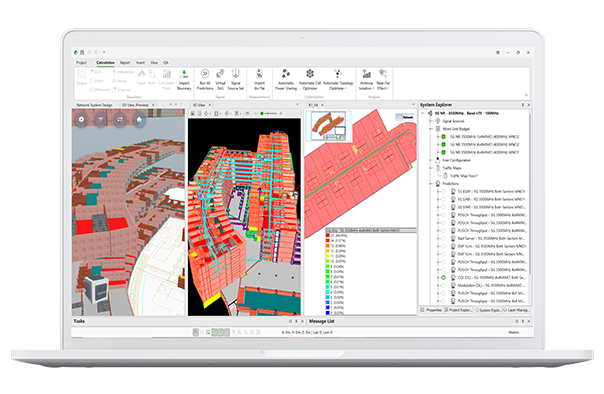Ranplan CEO: Insights on Connectivity Trends for 2025

Monetization of connectivity enters centre stage
As interest rates ease in most parts of the world, suppliers of wireless products and services, long hampered by customers’ depressed spending appetites, begin to exude optimism that a recovery, albeit likely moderate, is on the cards. After the initial unbridled euphoria surrounding 5G, attention is now shifting to maximizing returns on investment, irrespective of the generation or type of technology. In an industry lacking intrinsic revenue growth, monetization of novel connectivity services is one of the foremost corporate objectives.
To this end, new initiatives to make telecom networks more cognitive (fuelled by generative AI-inspired Machine Learning algorithms) and programmable (heralded by the GSMA Open Gateway API description). The ultimate goal is to engender an entirely new era of unparalleled productivity and proficiency in meeting end-users’ varying needs in real-time – realizing the vision of ‘network slicing’.
Attention is now shifting most markedly to maximizing returns on investment.
Automate what you can… and also what you must
The sheer complexity of communication networks – amplified by increased demands, leaps in technology innovation and heightened security concerns – make automation of manual tasks an absolute necessity. In its absence, operational costs will grow exponentially, quality of service will decline, time-to-market will slow. The result? New use cases won’t be addressed properly and dissatisfied customers who either defect or protest – or both.
Automation is no longer a choice; it is an indispensable element for any operation aspiring to achieve long-term success. The intricate and varying nature of network demands makes it nearly impossible for human brains to figure out ‘ad hoc’ or ‘heuristically’ the best course of action without assistance. ‘Pen and Paper’ must give way to computers instructed by reputable software-driven solutions capable of making precise, reality-aligned predictions and detailed conclusions before infrastructure changes are made.
Automation is no longer a matter of choice. It is an indispensable element for success.

Open files pave the way to seamless exchange of data
For all the setbacks sometimes noticed, the trend towards openness is most certainly here to stay. The benefits are most compelling: seamless data exchange between diverse software components (the way universal APIs intended to do), smoother interactivity between sensing and reaction nodes for adaptive and self-reconfiguring networks, and effective reuse of content in various formats. A pre-requisite for success, as history shows with outstanding lucidity, is industry-wide support for unified formats that prohibits painful fragmentation.
In the art of wireless planning, design and optimisation, we see momentum is building behind BIM standards, such as IFC (Industry Class Foundation) and OpenUSD (Universal Scene Description). Early findings reveal efficiency savings up to 80% – or even more – for sophisticated industrial projects through the reuse of building models.
We see the momentum behind BIM standards strengthening in 2025 and beyond.
Digital replicas of the world buoy simulation activities
Breaking down the silos of the past and proprietary file format restrictions is one of the most decisive missions that the ICT sector must be motivated to conclude before the end of this decade. A successful outcome will empower customers to break free from legacy systems, mix-and-match best-of-breed software components, to create fully interoperable systems that can adapt to variable situations on a near real-time basis.
The creation and maintenance of increasingly realistic digital replicas of the real world (aka Digital Twins) constitutes a key enabler in this process – the fundamental blocks of learning and understanding. Underpinned by material advances in hardware and software, these developments will enhance the value of computer simulations, enabling the universal desire to re-use 3D drawings from well-established tools in the architecture, engineering and construction industries, such as Revit and Navisworks.
Re-use of 3D drawings will enhance learning, understanding, and innovation across industries.
A holistic approach to private wireless unleashes its potential
Provision of connectivity services for dedicated purposes represent a primary growth vehicle for the wireless industry. The value proposition is clear across numerous verticals. Factories and warehouses can fully automate operations with the help of radio-powered drones and robots navigating freely around the premises. Mines may significantly magnify efficiency and safety by employing remote control drills, excavators, trucks and other types of equipment. Security specialists are likely to leverage high-bandwidth radio beams to stream videos from flexibly and widely dispersed cameras for AI-driven computerized analysis in real-time.
However, the primary challenge for providers is to meet the most exacting of requirements. Of utmost importance is the ability to accurately model radio propagation both inside and in close proximity to buildings where interference control plays a crucial role. In machine centric environments, reactivity (aka low-latency) and redundancy (protection against network failures) are just as important as the traditional coverage and capacity KPI metrics. In cumbersome physical environments where machines are connected, a holistic approach to the design and planning of dedicated networks is essential to unlocking their full potential.
In private wireless, the primary challenge is to meet the most exacting of requirements.

Wi-Fi evolves to become ‘professional grade’
As poignantly illustrated by its latest incarnation, Wi-Fi is truly inspired by some of the most vital ingredients associated with cellular. With the launch of Wi-Fi 7, the IEEE standard is now ready to offer both roaming (via the OpenRoaming framework) and handover (using Multi-Access Points) capabilities. These advances, along with support for Multi-Link Operation (MLO), extraordinary channel bandwidths, Massive MIMO (and one would predict beamforming in the not-too-distant future), make Wi-Fi increasingly qualified to handle the more sophisticated of use cases.
While reliability and security concerns are likely to persist, the advantages of license-free operations make Wi-Fi – long viewed as a stand-alone short-range extension of a fixed cable or fibre – a viable contender to 3GPP for the more elementary of scenarios, such as in the office and the home. In making the transition to ‘professional grade’ connectivity, the Wi-Fi community will be compelled to adopt a network-based approach with the art of radio planning and optimization.
Recent advances make Wi-Fi increasingly similar to 3GPP (cellular) in its capabilities.
Life-cycle perspective gains greater significance
Irrespective of the technology choice, providers of dedicated services – whether for private enterprises or public safety – must learn to carry out network design by the book. When it comes to wireless, there is no room for short-cuts. It may save time initially but it's likely to backfire leading to performance degradation, user dissatisfaction and demands for re-design. Ultimately, augmenting the total costs and efforts.
Careful planning from day one is imperative. Adopting a life-cycle perspective on network evolution is advisable. Service requirements, after all, are likely to change in the course of time. Traffic patterns are bound to shift. Technologies invariably progress. Networks of the future must be able to go through various phases gracefully without compromising either reliability or security, and without wasting unnecessary resources.
The lifecycle approach minimizes wasted resources and maximises reliability and security throughout the network’s lifespan.

In preparation for 6G: intelligent surfaces, air-to-earth…
Mid-way through the 2020s, the wireless industry is now beginning to prepare itself in earnest for the sixth generation of technology. While the standard specification is still in its infancy, a series of key pillars have already been identified (and largely been agreed upon).
- Reconfigurable Intelligent Surfaces (RIS), which are intended to act as ‘smart mirrors’, alleviating the impact of physical impediments to the natural propagation of radio waves.
- Communication in the terahertz (THz) frequency band could enable leaps in capacity and throughput in highly localized settings.
- Air-to-earth communication aims to bring airborne and terrestrial networks closer together to improve the economics of complete coverage in less populated areas, and in the event of emergencies, such as natural disasters, to offer back-up wireless solutions.
Leaders in these domains are poised to make their results shine in the years to come.
Investments in 6G are set to intensify in the run-up to commercial launch by 2030.
Closing Thoughts
As we set the scene for 2025, the wireless industry stands at a pivotal moment. By embracing automation, open standards, and a holistic approach to connectivity, we can unlock new levels of efficiency and innovation. Whether enhancing private wireless networks, advancing Wi-Fi, or preparing for 6G, success will rely on precise and strategic network planning. This critical foundation ensures that these innovations are implemented seamlessly, delivering reliable and future-ready solutions for a rapidly evolving connected world.
Discover the advanced features of Ranplan Professional and elevate your network planning to new heights





